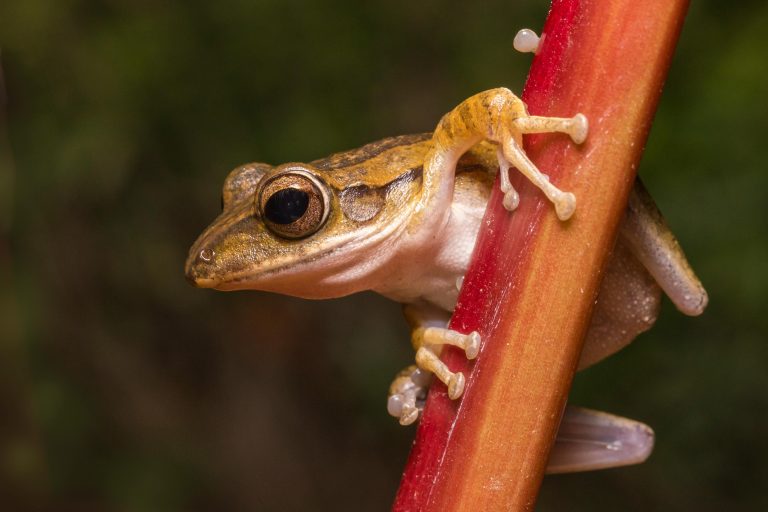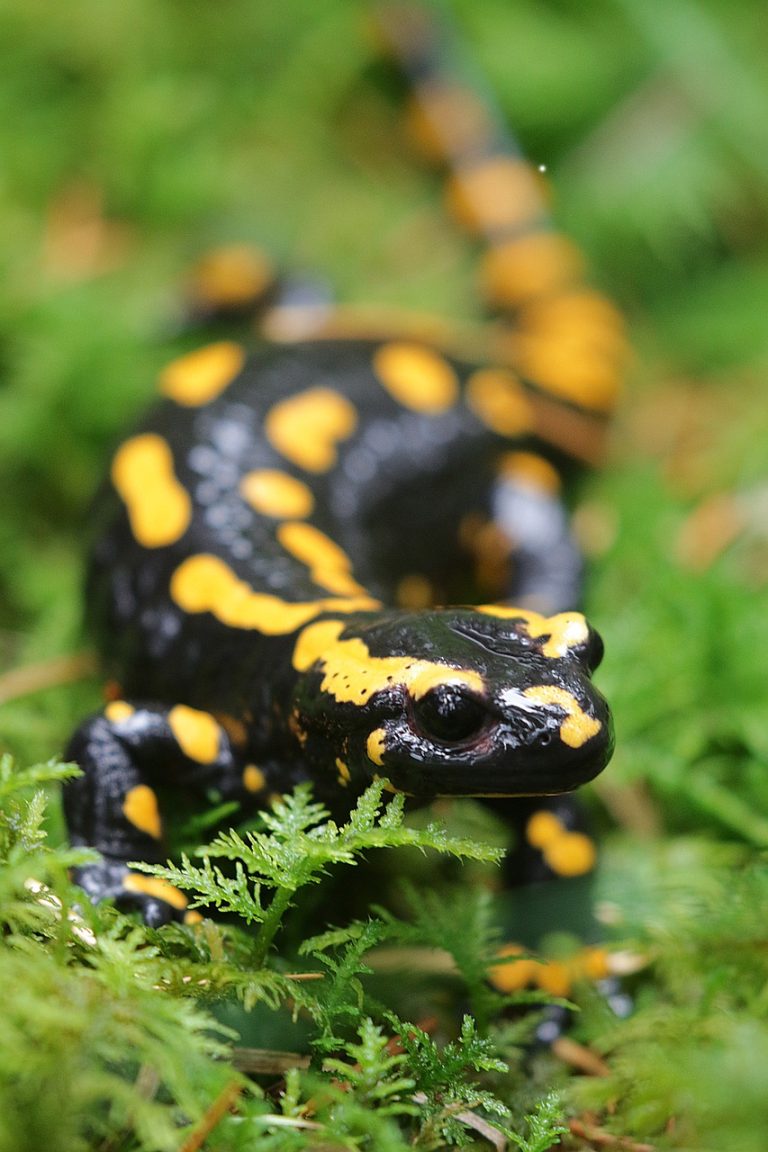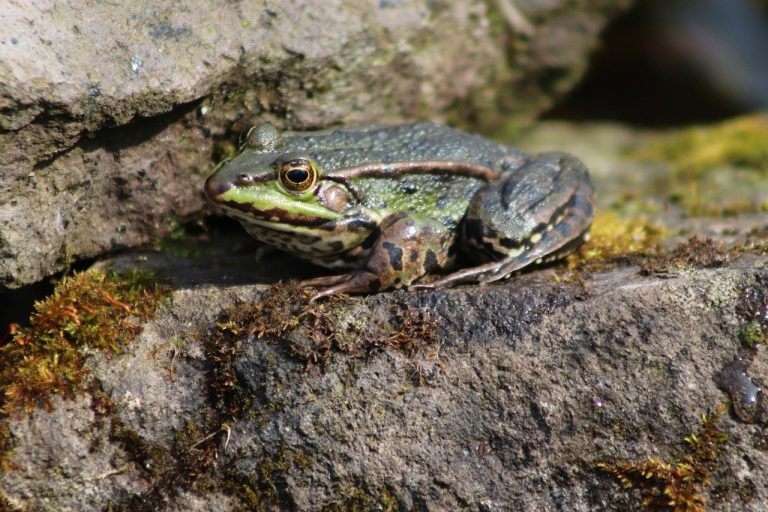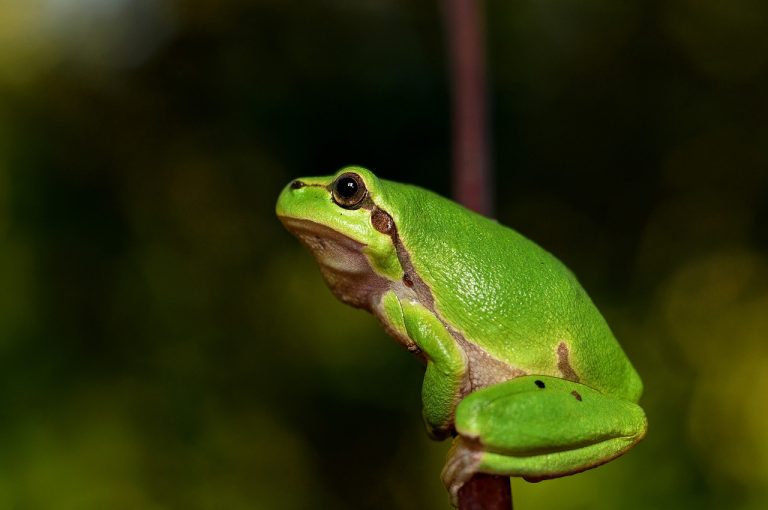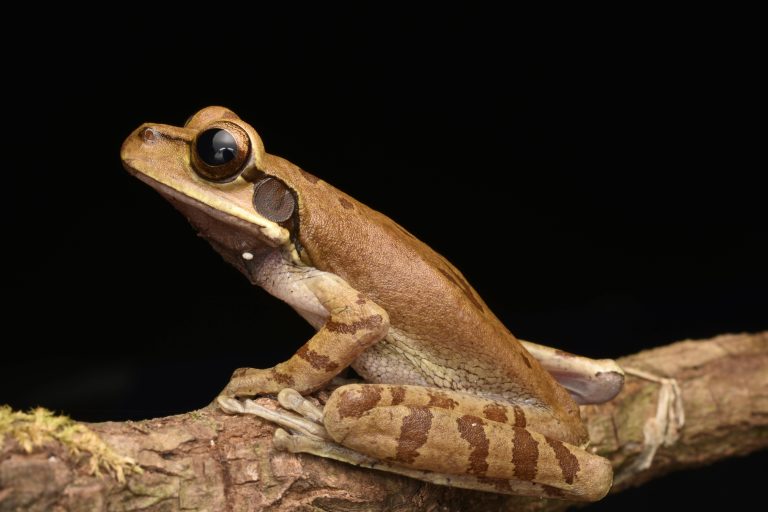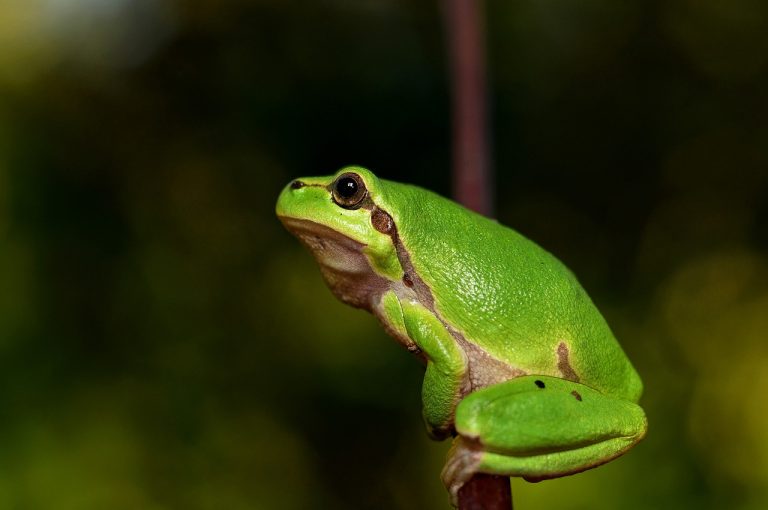African Bullfrog (Pyxicephalus adspersus)
“The African bullfrog is one of only three species of frog that have “teeth.”
African Bullfrog Scientific Classification
- Kingdom: Animalia
- Phylum: Chordata
- Class: Amphibia
- Order: Anura
- Family: Pyxicephalidae
- Genus: Pyxicephalus
- Scientific Name: Pyxicephalus adspersus
African Bullfrog Conservation Status
- Least Concern
African Bullfrog Locations
- Africa
African Bullfrog Facts
- Main Prey: Reptiles, small mammals, small birds, insects, amphibians, including other frogs
- Name Of Young: Tadpole, polliwog, larva
- Group Behavior: Solitary
- Fun Fact: The African bullfrog is one of only three species of frog that have “teeth.”
- Estimated Population Size: Unknown
- Biggest Threat: Habitat destruction, hunting, pet trade
- Most Distinctive Feature: Size
- Other Name(s): Pixie frog, Giant African Bullfrog
- Litter Size: As many as 4,000 eggs laid at a time
- Habitat: Deserts, high veld, floodplains, grassland, savanna, farms, marshes, ponds, lakes
- Predators: Humans, birds of prey, monitor lizards, turtles
- Diet: Carnivore
- Type: Amphibian
- Common Name: African bullfrog
- Number Of Species: 1
- Location: Sub-Saharan Africa
African Bullfrog Physical Characteristics
- Color: Yellow, Cream, Olive, Light-Brown
- Skin Type: Permeable
- Lifespan: 20-40 years
- Weight: 0.9-1.8 kg (2-4 lbs)
- Length: 11.43-25.4 cm (4.5-10 in)
- Age of Sexual Maturity: 1.5-2 years
The African bullfrog is one of the largest frogs in the world, second only to the Goliath Frog. Also called the Giant African Bullfrog, male bullfrogs can reach up to 10 inches in length and weigh over 4 pounds. These impressive amphibians are native to central sub-Saharan Africa and are known for their voracious appetites, eating anything they can catch. Despite their size and appetite, they are also popular as pets. One distinctive feature of the African bullfrog is the sound it makes when irritated, which has been compared to croaking, roaring, or even bleating.
4 Incredible African Bullfrog Facts!
- Pixie Frog Name Origin:
Interestingly, the African bullfrog is also called the pixie frog, a name that amusingly contrasts with its large size. The name “pixie” actually comes from its scientific name, Pyxicephalus adspersus. - Doting Yet Dangerous Fathers:
As belligerent as he can sometimes be, the male African bullfrog is surprisingly a doting father—up to a point. If he sees that the pool holding his tadpoles is drying up, he’ll use his strong back legs to dig a channel to a larger pool, refilling the smaller pool and allowing the tadpoles to escape. However, these attentive dads have a dark side and will occasionally eat their young. - Unique Shedding Process:
African bullfrogs shed their skin in its entirety occasionally. They start by splitting the skin down the back, then across the belly, allowing the frog to pull its arms and legs out and finally work the skin off its head. Not one to waste a meal, the frog then consumes the shed skin. - Stealthy Burrowers:
After burrowing underground, some African bullfrogs keep just their noses above ground, enabling them to grab any unsuspecting prey that ventures too close. This stealthy tactic makes them efficient predators.
Scientific Name
The African bullfrog, scientifically known as Pyxicephalus adspersus, belongs to the Pyxicephalidae family of sub-Saharan frogs and the Pyxicephalus genus. The name “Pyxicephalus” comes from the Greek words meaning “round box head.”
The African bullfrog is the largest of the four species in the Pyxicephalus genus. The other species include:
- The edible bullfrog (Pyxicephalus edulis)
- Calabresi’s bullfrog (Pyxicephalus obbianus)
- Pyxicephalus angusticeps
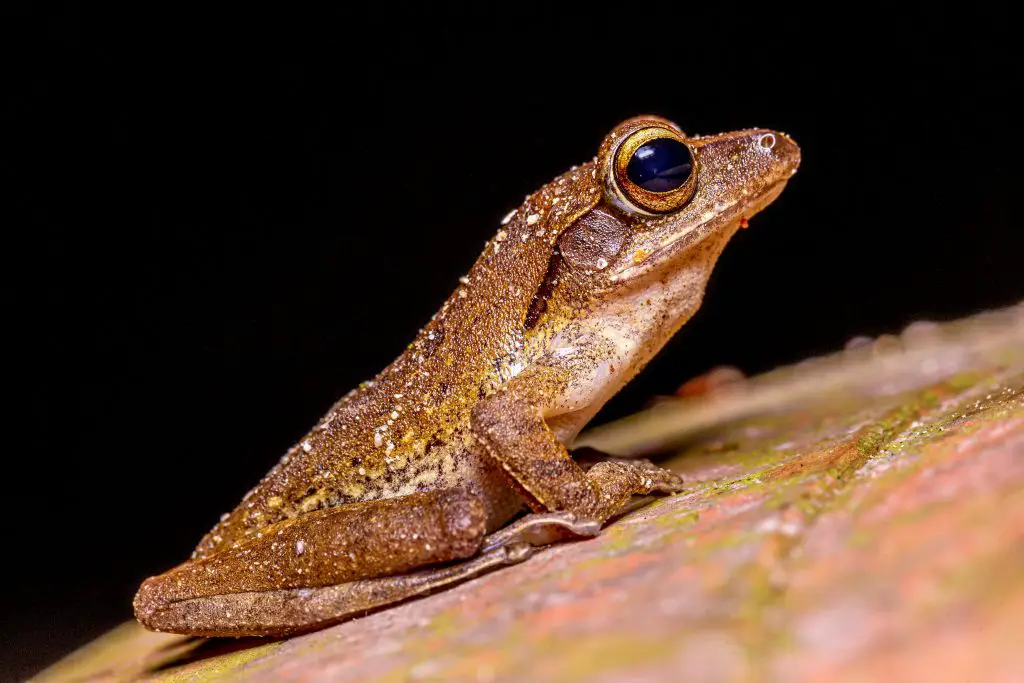
Evolution and History
The African bullfrog has evolved several adaptations to thrive in its diverse and often harsh environments.
Habitat Adaptations:
Facing threats primarily from habitat destruction, the African bullfrog has developed the ability to survive in a range of climates, from the hot deserts to the velds—high open lands that can drop below freezing in the winter. One remarkable adaptation is estivation, a state of dormancy similar to hibernation. During estivation, the bullfrog sheds its skin in layers, forming a protective cocoon around itself. This cocoon helps minimize water loss and shields the frog from the harsh, dry conditions of the African dry season, which can last 7-8 months. While cocooned, the frog also reduces its metabolic rate, conserving energy until favorable conditions return.
Physical Adaptations:
Another significant adaptation is the presence of odontodes—sharp, tooth-like structures on its jaw. These odontodes are used to grasp prey firmly and defend against predators. Unlike many frogs, which have pedicel teeth divided into three sections, the African bullfrog has non-pedicellate teeth made of dentin with an enamel tip on the crown. This specialized dental structure enhances their ability to catch and consume a wide variety of prey.
Appearance and Behavior
Male African bullfrogs are significantly larger than females, reaching lengths of almost 10 inches, while females are around 4.5 inches long. Males can weigh a little over 4 pounds, while females weigh about half as much due to their smaller size. This size difference is unusual in frog species, as typically females are larger than males.
In appearance, fully grown male African bullfrogs are characterized by their olive green coloration, with throats in shades of yellow or orange. They can grow to be as large as a dinner plate. In contrast, females are much smaller, ranging from olive green to light brown with a white or cream throat. Younger bullfrogs display more vibrant colors, with mottled skin and white or yellow lines running down their back. As they mature, their colors fade into the adult coloring, although some females may retain the lines. Adult frogs possess a knob on their hind foot shaped like a shovel, aiding in digging. Their back toes are partially webbed, while the front toes are stubby and lack webbing.
The African bullfrog’s body structure is similar to that of most other frogs, with powerful legs enabling them to leap away from threats. Their skin serves multiple purposes, protecting internal organs, facilitating oxygen intake, and absorbing water. Additionally, the skin contains numerous glands, many of which secrete a moistening solution that protects against pathogens and aids in escape from predators.
Despite lacking conventional teeth, the African bullfrog possesses three structures called odontodes on its bottom jaw. These growths, resembling teeth but growing on the skin’s surface, are used to grasp and hold onto prey. Remarkably, the African bullfrog is one of only three frog species known to possess these “teeth.”
African bullfrogs are primarily solitary, except during the breeding season, which occurs after heavy rains create shallow, temporary pools of water. A gathering of frogs is referred to as an army or a knot.
Habitat
The African bullfrog is a highly adaptable amphibian found across a diverse range of habitats in sub-Saharan Africa. Its habitat spans from as far east as Somalia to as far west as Nigeria, and extending south into South Africa.
Remarkably, despite being amphibians, African bullfrogs are capable of surviving in climates that remain dry for extended periods, sometimes even years. While they can inhabit mountainous regions, they are typically found near bodies of water, where they are likely most content.
One of the secrets to their remarkable adaptability lies in their behavior during harsh climates. When conditions become too harsh, African bullfrogs dig chambers in the soil, where they enter and become dormant until conditions improve. This ability to enter a state of dormancy enables them to withstand challenging environmental conditions until more favorable circumstances return.
Diet
As with many other frog species, the African bullfrog is a carnivorous creature, feeding on a variety of prey including reptiles like snakes, other amphibians, insects, small mammals like mice, and even small birds. Interestingly, they are known to cannibalize their own species, with tadpoles sometimes consuming their siblings upon hatching. In some cases, a male bullfrog may even consume some of the eggs or tadpoles he is guarding.
When hunting, the African bullfrog employs its sticky tongue to capture prey. Once the tongue makes contact, it adheres to the prey and is retracted back into the frog’s mouth, where the prey is held by specialized dermal teeth while the frog dispatches it.
For those who keep African bullfrogs as pets, it’s essential to ensure they do not ingest indigestible items such as toys or foreign objects. Additionally, feeding them muscle meat like ground beef is not recommended as it lacks the necessary nutrients. Proper enclosure maintenance is crucial to prevent infections in their skin and eyes, as well as ammonia poisoning. Regular cleaning and appropriate diet are key to keeping these fascinating creatures healthy in captivity.
Predators and Threats
African bullfrogs face threats from various natural predators in their environment. Birds of prey, equipped with powerful talons or beaks, pose a significant danger, as they can swoop down and snatch the frogs. Additionally, monitor lizards and turtles target young frogs, preying on them before swallowing them whole.
Interestingly, human communities inhabiting the same habitats as African bullfrogs sometimes consider their meat a delicacy and consume them as part of their diet. This human predation adds another layer to the complex ecological dynamics surrounding these amphibians.
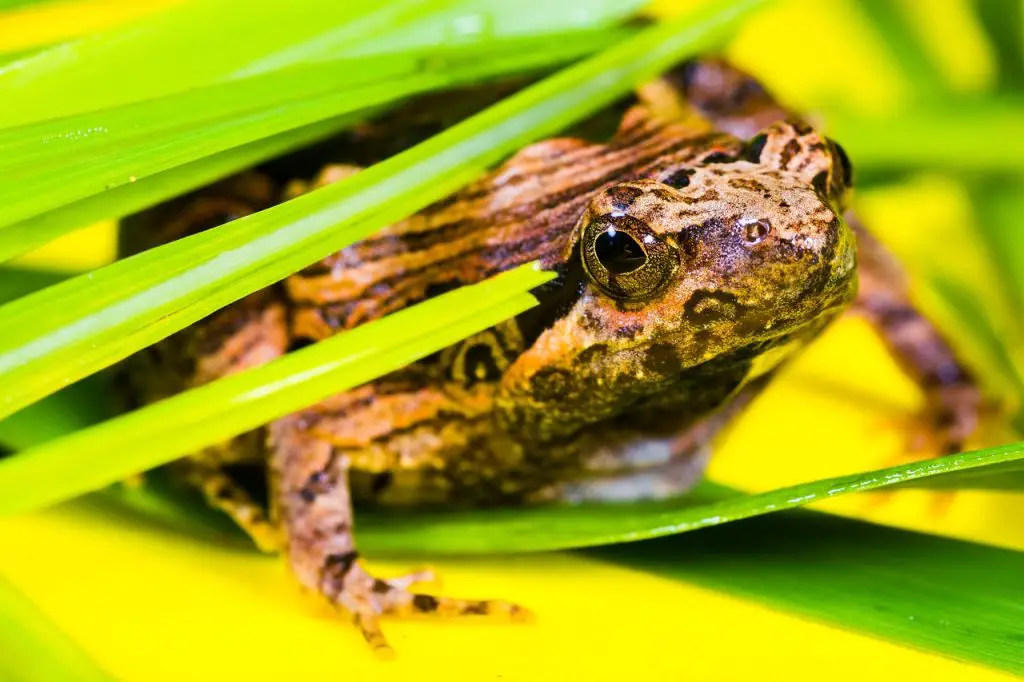
Reproduction, Babies, and Lifespan
The African bullfrog reaches sexual maturity at around 1.5 to 2 years of age. During the breeding season, younger males congregate in one area of the pool, while larger males position themselves in the center, engaging in territorial disputes that can escalate into fights, sometimes resulting in fatalities. To attract females, males emit a distinctive loud “whoop!” sound. Females respond by entering the water and attempting to mate with the dominant male. A single female can release up to 4,000 eggs into the breeding pool before leaving the male to guard them.
Unlike mammals, African bullfrogs have no gestation period. Once a female selects a mate, she lays her eggs on the water’s surface, which the male then fertilizes. About two days later, the eggs hatch into larvae, tadpoles, or polliwogs.
As amphibians, the young African bullfrogs do not nurse and therefore do not require weaning. They are omnivorous, consuming vegetation, live and dead insects, small fish, and other tadpoles. However, as they mature, they transition into exclusive carnivores.
Tadpoles undergo metamorphosis into young frogs in approximately three weeks. If they survive infancy, African bullfrogs typically live for about 20 years, though some have been known to live up to 45 years in captivity. Like other amphibians, they are susceptible to diseases such as chytridiomycosis, which affects the skin, as well as diseases caused by ranaviruses as they age.
Population
While the precise population of African bullfrogs remains unknown, they are currently classified as “Least Concern” in terms of conservation status. However, there is concern among researchers that their population may be in decline.
This classification indicates that, at present, African bullfrogs are not facing immediate threats of extinction. Nonetheless, ongoing monitoring and conservation efforts are necessary to ensure the long-term survival of this species, especially given indications of potential population decline.
Conclusion
The African bullfrog (Pyxicephalus adspersus), known for its impressive size and unique behaviors, is a resilient amphibian native to sub-Saharan Africa. Despite being classified as “Least Concern” by the IUCN, the species faces threats from habitat destruction, hunting, and the pet trade. These voracious carnivores are notable for their parental care, distinctive “teeth,” and ability to survive in diverse and often harsh environments. Conservation efforts, including habitat protection and regulation of hunting and trade, are essential to ensure their continued survival and ecological role.
Reference:
